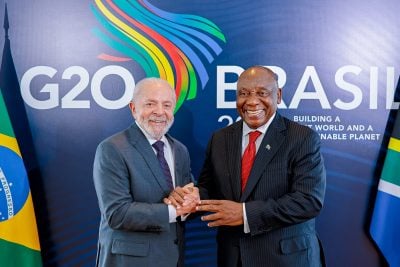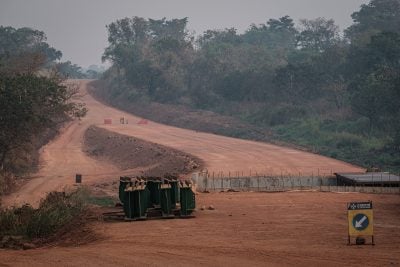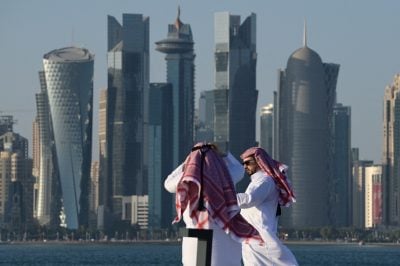Mozambique’s quest for economic glory has been brought closer to reality by the opening up of massive gas and coal deposits in the country. In a sudden turn of economic events, the southeast African country stands to score massively from rich newly identified coal and gas deposits, and droves of investors have arrived to claim a stake. Report by Tom Nevin.
Transport and power hold the key to Mozambique’s rapid and sustainable development and these two sectors will grab centre stage and the lion’s share of available development finance as the southeast African nation enters a decade of sustained economic growth aiming for GDP expansion of around 10% a year.
Transport, energy and power, telecommunications, water and social infrastructure will receive investments of some $34bn because, believes environmental and building technologies industry analyst, Sarah O’Carroll, “improved logistics infrastructure for raw material exportation will be necessary to make the mines successful and competitive”. Some of the major coalfields are agreeably sited in the Tete Province near the Zambezi River and close to the main trunk road from Zimbabwe to Mozambique’s second port of Beira. Gas fields are comfortably accessible in the sheltered Mozambique channel.
The virtually inexhaustible reserves of coal will stimulate new thermal power station build while Frost & Sullivan estimate that there are nearly 60 multimillion-dollar ongoing infrastructure projects in the country, of which 10 are multibillion-dollar projects.
The power-hungry mining industry will for now meet its electricity needs through the use of diesel generators while Mozambique completes several capacity-building projects in the energy sector to meet projected increases in demand. Some $23bn is being spent over the next decade on the construction of a number of trunk roads destroyed in the civil war, along with the development of the Nacala-Beira-Maputo corridors.
The string of discoveries of coal reserves, largely free of impurities, has attracted world mining attention and exploration successes have conferred the title of “the natatorium of coal mines” because Mozambique is a virtual “swimming pool of coal deposits”. More than any other non-fossil mineral, coal equals energy at an affordable level, while the same can be said for the Zambezi River and the potential it holds for hydropower.
As a result of bull’s-eye successes for exploration companies, Mozambique is fast becoming a region of global significance for the coal sector. Coal majors are now entering into strategic partnerships with companies that have technical expertise in coal mining and exploring in Mozambique .
“As a matter of fact,” observes exploration, mining and resources group Rachana on its website, “Mozambique stands as Africa’s second-largest coal producer behind South Africa which holds Africa’s major coal reserves. Today coal mining exploration is the cornerstone industry of Mozambique and is the major contributor to the country’s economy.”
O’Carroll advocates caution. “The government’s reliance on donor funding is the single most significant challenge restraining infrastructure development in the country,” she says. “However, the private sector is currently supporting 65.6% of all infrastructure projects in place, thus stimulating infrastructure development in the country.”
Mining companies, in particular, account for 17.1% of all infrastructure investments, ensuring that infrastructure is sufficient to support their coal exports. “Companies that have been in the market for several years, and can demonstrate their ability to overcome challenges, as well as work within a specified budget and deliver projects in a timely manner have the greatest advantage in winning tenders in Mozambique,” O’Carroll says.
Apart from being more than capable of supplying its coalfired thermal power stations, Mozambique is destined to become a significant exporter of hard coking coal. To that end, the 600km Sena Railway has been rehabilitated for coal transportation to Beira. The port is being made over and upgraded with a coal terminal capable of handling up to 20m tons a year. Mining companies are also investigating the potential of using the Zambezi River for barging the coal to the coast.
Heart of the stampede
Tete Province is at the heart of the coal stampede. Brazilians, Indians, Americans, South Africans and a cosmopolitan throng have converged on the area, either to claim their prospect or to try to get their hands on one. The town of Tete is trying to catch up and sparkles here and there with a new bank building, a service station, restaurant and department store. At least two hotels are under construction. Down the road in the port city of Beira, investors are jostling for a stake in the gas boom.
Word has it that the coal and gas investors have $80bn to spend over the next five years or so in the development of collieries and drill holes. Another $38bn is available for infrastructure development. It stretches the imagination how the country, with a GDP of just $10bn, will cope with a cascade of investment cash of nearly $120bn.
Concerns are voiced in donor and NGO ranks that the government has been caught on the wrong foot by the speed and scale of the foreign interest and does not have the technical capacity to cope with the rush of attention. Brazil’s Vale mining company has already started exporting and the country could be producing 20m-50m tons of coal per mine annually within the next decade. Gas pumping could start as early as 2018 as a scramble for East African hydrocarbons hots up.
“The Mozambicans know their weaknesses and they are terrified, but in a good way,” says one donor. “They are terrified they will get it wrong and they worry that expectations have run ahead of what they can deliver.” On the other hand, trade minister Armando Inroga says Mozambicans are being trained for new industries, service centres are being readies and investment zones are being installed. He insists that the country will take the coal and gas flurry in its stride. “Mozambique is different,” he said. “Other countries look to the energy sector, for us even now everybody wants coal, everybody wants gas but we still maintain agriculture as the main sector.”
Mozambique finds itself at the centre of an investor bidding storm. Money is everywhere.
Suddenly gas and coal dangle the potential to transform unrecognisably the fortunes of a state that only yesterday depended on international donors for 45% of its budget. Can the country harness the benefits to lift the nation out of poverty without being ensnared by the dreaded commodity curse that has been the ruin of many a developing country in the past? “It’s a race against time,” says a donor official.
Want to continue reading? Subscribe today.
You've read all your free articles for this month! Subscribe now to enjoy full access to our content.
Digital Monthly
£8.00 / month
Receive full unlimited access to our articles, opinions, podcasts and more.
Digital Yearly
£70.00 / year
Our best value offer - save £26 and gain access to all of our digital content for an entire year!

 Sign in with Google
Sign in with Google 




